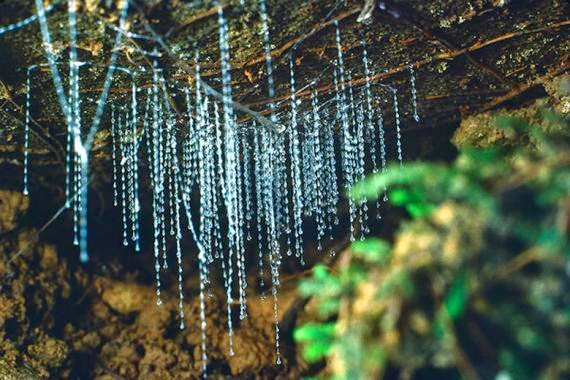Introduction
The Waitomo Glowworm Caves fascination is a hole at Waitomo on the North Island of New Zealand, known for its populace of glowworms, Arachnocampa luminosa. This species is discovered only in New Zealand. They are around the measure of a normal mosquito. This cavern is a piece of the Waitomo Holes framework that incorporates the Ruakuri Hole and the Aranui Hollow.
The fascination has a present day guest focus at the doorway, to a great extent planned in wood. There are composed visits that incorporate a watercraft ride under the glowworms.
History
The name "Waitomo" originates from the Māori words wai, water and tomo, gap or shaft. The nearby Māori individuals had thought about the hollows for a long while before the neighborhood Māori Boss Tane Tinorau and an English surveyor, Fred Mace, did a broad investigation in 1887. Their investigation was directed with candlelight on a pontoon going into the hollow where the stream goes underground. This is currently the passageway for the hole. As they started their excursion, they ran over the Glowworm Cavern and were astonished by the twinkling shine originating from the roof. As they voyaged further into the hollow by poling themselves towards a bank, they were likewise amazed by the limestone developments. These creations encompassed them in all shapes and sizes.
They returned commonly after and Boss Tane freely found the upper level passage to the hollow, which is presently the current doorway. Tane Tinorau and his wife Huti, by 1889, had opened the hole to guests and were heading gatherings for a little charge. The organization of the hollow was assumed control by the legislature in 1906 after there was an acceleration in vandalism. In 1910, the Waitomo Holes Inn was assembled to house the numerous guests.
In 1989, the area and cavern were come back to the relatives of Boss Tane Tinorau and Huti. They now get a rate of the cavern's income and are included in the administration and advancement of the hollow. These relatives incorporate a significant number of the representatives of the holes today.
Geology
Geographical and volcanic action has made around 300 known limestone collapses the Waitomo locale in the course of the last 30 million years.
The limestone developments in the Waitomo Glowworm Caverns were structured when the locale was still under the sea around 30 million years ago. The limestone is made out of fossilized corals, seashells, fish skeletons, and a lot of people little marine organic entities on the ocean couches. Over a great many years, these fossilized rocks have been layered upon one another and compacted to make limestone and inside the Waitomo locale the limestone might be in excess of 200 m thick.
The caverns started to structure when earth development brought on the hard limestone to twist and clasp under the sea and climb over the ocean depths. As the rock was laid open to air, it divided and made splits and shortcomings that considered water to move through them dissolving the limestone and over a huge number of years vast caverns were shaped.
The stalactites, stalagmites, and other hollow arrangements developed from water trickling from the roof or streaming over the dividers and abandoning limestone stores. The stalagmites structure upward from the floor while the stalactites structure from the roof. At the point when these establishments unite they are called columns or sections and in the event that they turn around one another they are called helicti. These hole designs take a large number of years to structure given that the normal stalactite develops one cubic centimeter every 100 years.
Biology
The most famous creature in the hole is the glowworm Arachnocampa luminosa. There are a few little submerged lakes that were made by freshwater brooks or streams.
The dividers of the caverns are secured with a mixed bag of organisms including the hole bloom (a removed connection to the class Pleurotus) that is really a mushroom-like organism. The most widely recognized creatures in the hollows are bugs. This incorporates pale skinned person cavern ants, titan crickets, and obviously the glowworms.
Location
The Waitomo Glowworm Hollows are spotted in the southern Waikato area of the North Island of New Zealand, 12 km northwest of Te Kuiti. This hollow is around 2 hours south of Auckland, 1 hour south of Hamilton, and 2 hours west of Rotorua via auto. The bearings to the Caverns are to passageway State Thruway 3 onto Waitomo Holes Street and to proceed the street for around 8 km.



Comments
Post a Comment